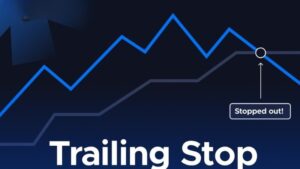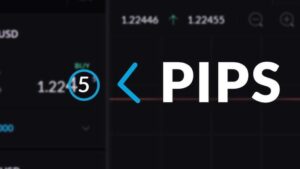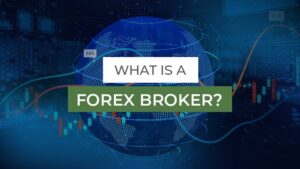In recent years, investing in overseas markets has become a shortcut for many in pursuit of financial freedom, but opportunities often come with traps. In particular, international exchange scams disguise themselves as professional financial institutions while hiding deadly risks. From forging international financial regulatory licenses to manipulating trading platform data, and even making withdrawal requests mysteriously vanish, these tactics are endless, leaving countless investors with nothing.
The financial market is like the deep sea: opportunities are the big fish, while scams are the sharks. If you are unprepared, don’t be surprised when you become their next meal. This article will fully dissect the tactics of international exchange scams, teaching you how to identify, prevent, and even cut losses at the earliest moment.

Why are international exchange scams so hard to avoid?
International exchange scams are so sophisticated because they exploit two investor mindsets—greed and trust. When you see words like “guaranteed profit,” “daily fixed return,” or “zero-fee trading,” your brain automatically filters out the risk warnings.

These platforms usually share the following features:
- Fake licenses and fake websites
They display phrases like “regulated by XXX” or “licensed by XXX” on their homepage, but when you check the official regulator’s website, the company name is nowhere to be found. Some even steal license numbers from legitimate companies.
- High-return temptation
“Double your money in three days” or “200% annualized return”—such promises don’t exist in regulated financial markets, but scammers know investors love hearing them.
- Realistic-looking interface
The scam platform’s interface may look even slicker than the MT4 or MT5 you normally use, but the data is entirely generated internally. They can manipulate price movements at will to stir your emotions and push you to invest more.
- Withdrawal difficulties
At first, small withdrawals go smoothly. But once you deposit a large sum, the platform delays with excuses like “under review,” “tax payment required,” or “account frozen,” until your money is gone for good.
Common tactics of international exchange scams

1. Disguising as a branch of a well-known exchange
Scammers use brand names, logos, and websites similar to famous exchanges, tricking you into believing they are legitimate branches. Once investors let down their guard, they deposit directly into the fake platform.
2. KOL endorsements and social media packaging
In recent years, scam platforms often recruit so-called “financial influencers” to flaunt profit screenshots, share trading tips, and even run free groups promising “quick money.” This marketing makes people lower their guard.
3. Fake customer service and emotional manipulation
Once you register, a “dedicated customer service rep” adds you on WhatsApp or Line, chatting warmly before guiding you to invest more. When your funds get stuck on the platform, they vanish without a trace.
Real case: from $50 to $50,000 trap
Xiao Chen, a beginner investor I know, saw a “famous analyst” recommend an international exchange on Facebook. At first, he put in just $50 to test the waters. In three days, his account showed a 30% profit, boosting his confidence, and he gradually added up to $5,000.
Then the platform’s customer service persuaded him to “upgrade to a VIP plan,” claiming that a $50,000 deposit would guarantee 20% monthly returns. Within a month, the platform became inaccessible, the customer service disappeared, and Xiao Chen’s money was gone.
This is the typical pattern of international exchange scams—lure you with small profits first, then entice you with high returns to invest everything.
How to identify international exchange scams?
- Verify regulator authenticity
Don’t just trust the license number shown on the platform’s site—always cross-check the company name and address on the regulator’s official website. - Test the withdrawal process
Before investing, deposit a small amount and try to withdraw. If withdrawals are obstructed or delayed, it’s a red flag. - Check domain names and company names
Some scam platforms mimic domains, e.g., changing .com to .net, or adding one letter after the brand name. - Avoid overpromises
Any investment promising high returns with zero risk should go straight on your blacklist.
How to prevent and respond?

Prevention:
- Work only with exchanges regulated by reputable authorities such as the FCA (UK Financial Conduct Authority) or ASIC (Australian Securities and Investments Commission).
- Avoid registering via links or apps recommended by strangers.
- Diversify investments—never put all your funds into a single platform.
Response:
- If you suspect an international exchange scam, stop depositing immediately and keep all transaction records and chat screenshots.
- Report to local police and financial regulators.
- If the transfer was through a bank, contact the bank quickly to attempt freezing the funds.
Safe options for legitimate international trading
If you want to participate in international markets without falling into traps, you can choose a regulated broker like Ultima Markets. UM holds multiple licenses including CySEC and ASIC, and also provides fund segregation and compensation protection under the Financial Commission.
In addition, UM supports mainstream trading platforms like MT4 and MT5, and integrates Trading Central analysis tools, allowing you to trade flexibly within a safe and regulated framework. 👉Start a demo account to practice
Conclusion
The financial market never lacks opportunities, but you must first learn to avoid traps. International exchange scams may look professional, but in reality, they exploit human greed and ignorance. Only by improving your ability to identify scams and choosing regulated platforms can you ensure you earn from the market—not pay tuition to scammers.
Instead of chasing overnight riches, it’s better to build wealth steadily. After all, in investing, lasting longer matters more than running faster.



